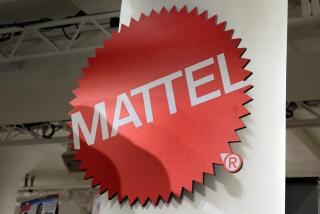Simmons Says He’s Still Interested in Buying Lockheed.
Texas financier Harold C. Simmons said Monday that he is interested in buying the 80% of Lockheed Corp. that he does not already own for an estimated $2 billion.
The proposed $40-a-share, all-cash offer met with a request for more detailed information from the Burbank-based company, one of the nation’s top defense contractors and maker of the Stealth fighter. Simmons’ proposal, outlined in a one-page letter to the company, drew a tepid response from industry analysts, who said the financier must overcome numerous obstacles to be successful.
“It’s a premium to the current share price, but it doesn’t strike me as being a dramatic offer,” said Lawrence M. Harris, an aerospace industry analyst at Bateman Eichler, Hill Richards in Los Angeles. “This could be a first move in a series of many--in an attempt to sway shareholders in a potential proxy contest.”
On the New York Stock Exchange, Lockheed stock gained 75 cents a share to close at $30.25. The announcement of the proposed deal was made after the market closed.
The proposal marks Simmons’ latest attempt in a 1 1/2-year-long effort to take over Lockheed, which last summer successfully opposed an effort by the Dallas billionaire to replace the board of directors at the company’s annual shareholders meeting. The company also opposed a Simmons proposal to buy Lockheed stock owned by the company’s employee stock ownership plan.
In a letter to Lockheed Chairman Daniel M. Tellep, the head of Simmons-controlled NL Industries, J. Landis Martin, said his group had $500 million in Lockheed stock and “substantial additional availability of cash and other assets that we are willing to dedicate to this effort.”
Martin said “it is essential that we have Lockheed’s cooperation and support” to see a takeover through in tight financial markets.
In response, Lockheed said in a statement that Simmon’s letter “does not contain detailed information regarding the proposed transaction. Lockheed will give full consideration to NL’s indications of interest when further details are provided.”
Analysts said Simmons, who already owns 18.9% of Lockheed, faces a tough task in raising the hundreds of millions of dollars needed to pull off a takeover. “The capital markets right now are probably not favorable to a hostile takeover, and so that would be one issue,” Harris said.
Simmons’ offer must meet many stiff requirements if he wants to avoid the “poison pill” provision in Lockheed’s stockholder rights plan. Under the plan, if someone purchases 20% or more of the company’s stock, the remaining shareholders can purchase shares at deeply discounted prices, significantly increasing the cost of a takeover.
To avoid the poison pill, an offer has to be in cash, fully financed and approved by a majority of the shareholders who are not involved in the buyout offer. Other provisions require an investment banking firm to review the fairness of the offer, which must also remain open for 60 days.
“The Simmons offer appears to meet the letter of the board’s requirements for being considered,” said Wolfgang Demisch, a defense analyst at UBS Securities in New York. “But that doesn’t mean the board will view this as an adequate offer.”
Simmons might have to increase his proposed $40-a-share offer to win broader acceptance. “Lockheed is a national treasure,” said Demisch. “I certainly think its value is a lot more than” $40 a share.
Last year, losses on fixed-price military contracts forced Lockheed to take nearly $500 million in write-offs, dramatically reducing profit. For the first nine months of fiscal 1990, the company posted $236 million in earnings on nearly $7 billion in sales.
Besides the Stealth fighter, Lockheed’s other major programs include the C-130 Hercules transport and development of a ballistic missile system for the Navy. Lockheed also leads a team that is competing with a Northrop-led group to build the Advanced Tactical Fighter for the Air Force.
More to Read
Inside the business of entertainment
The Wide Shot brings you news, analysis and insights on everything from streaming wars to production — and what it all means for the future.
You may occasionally receive promotional content from the Los Angeles Times.










